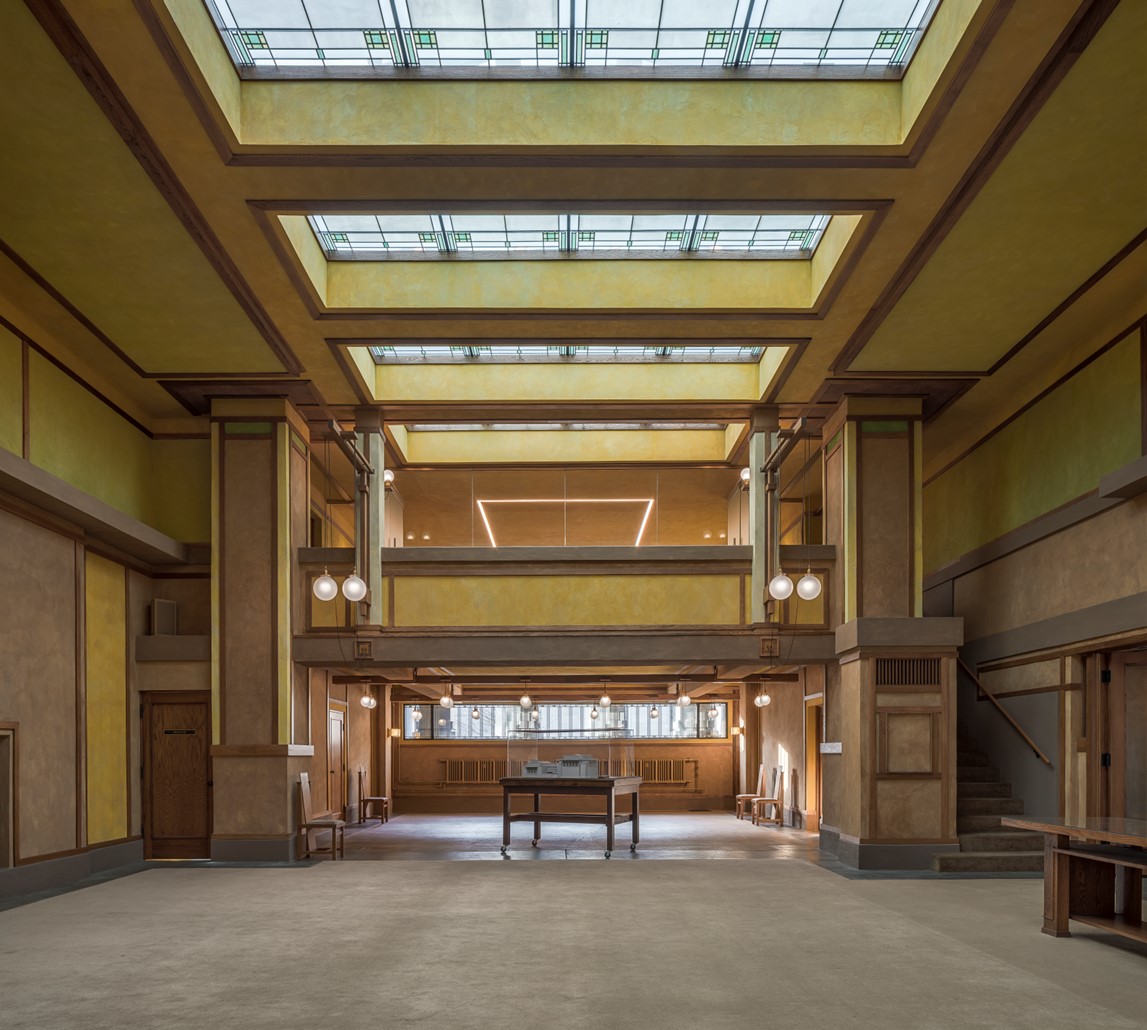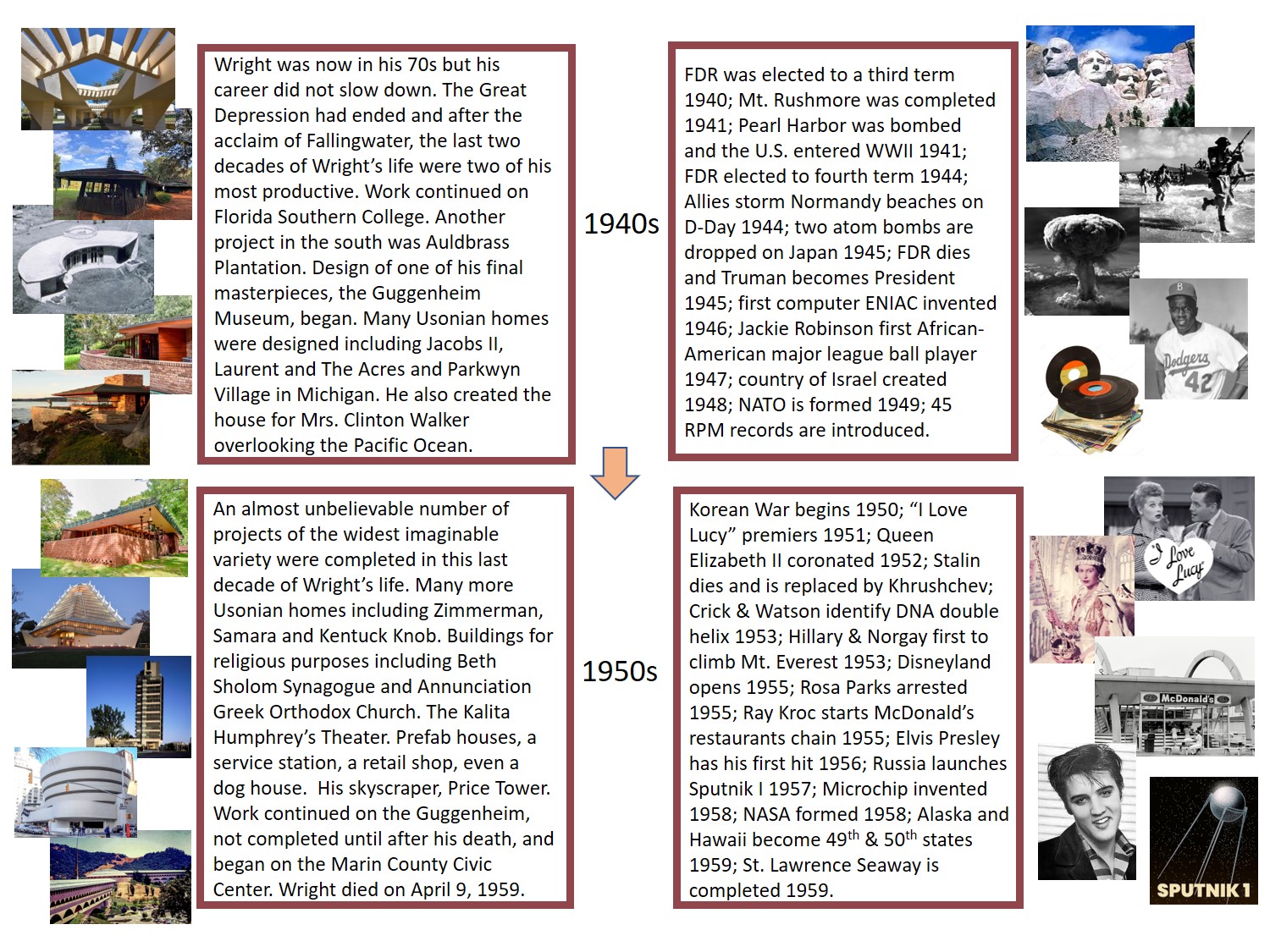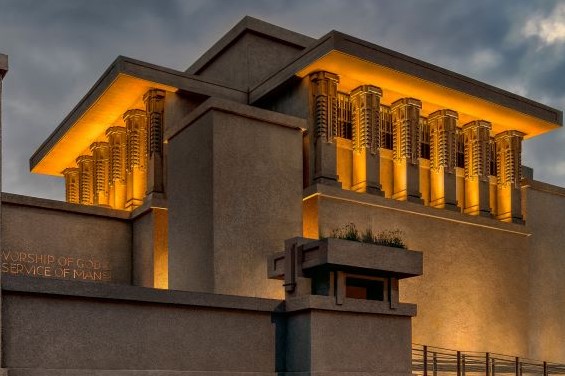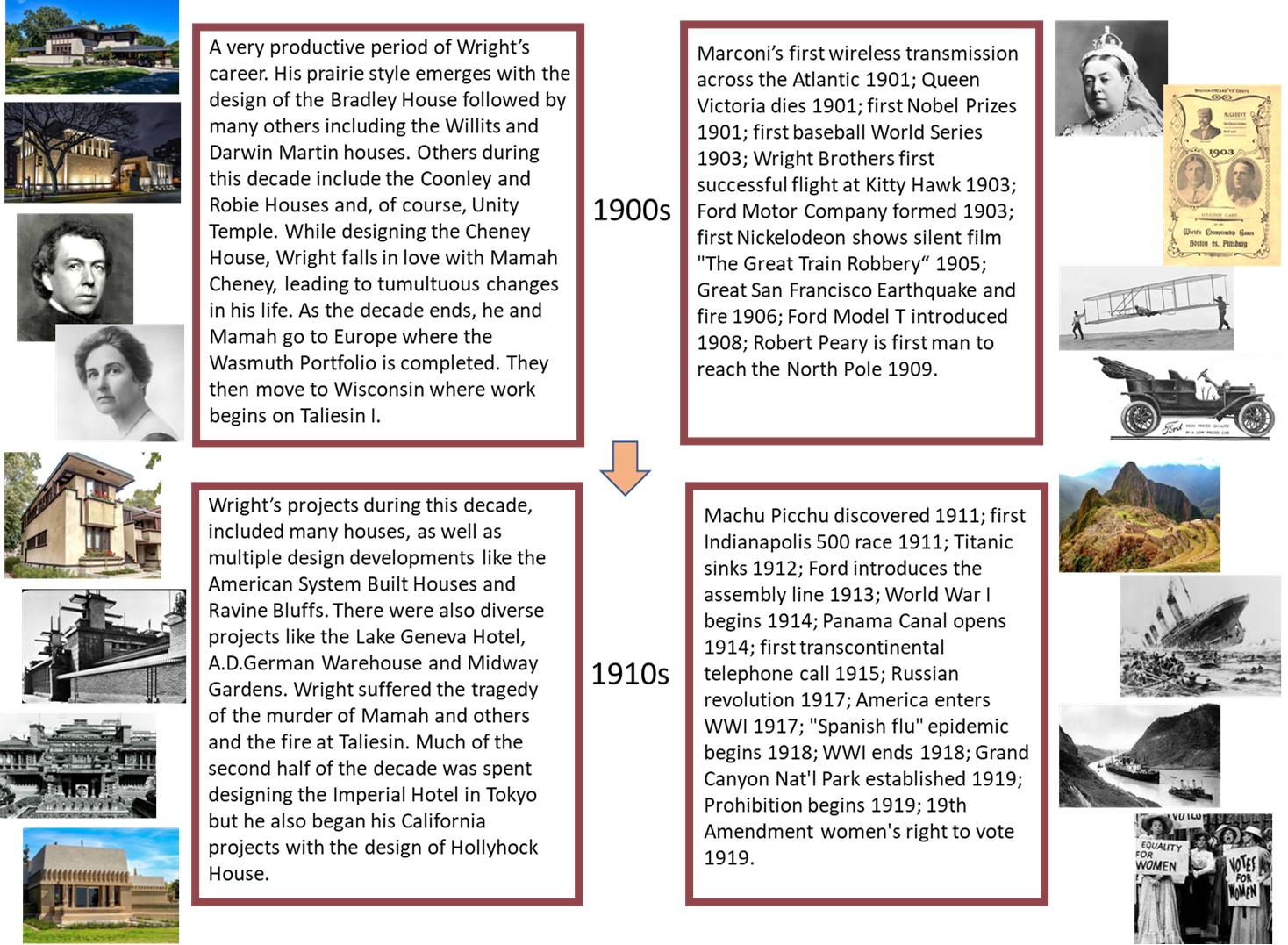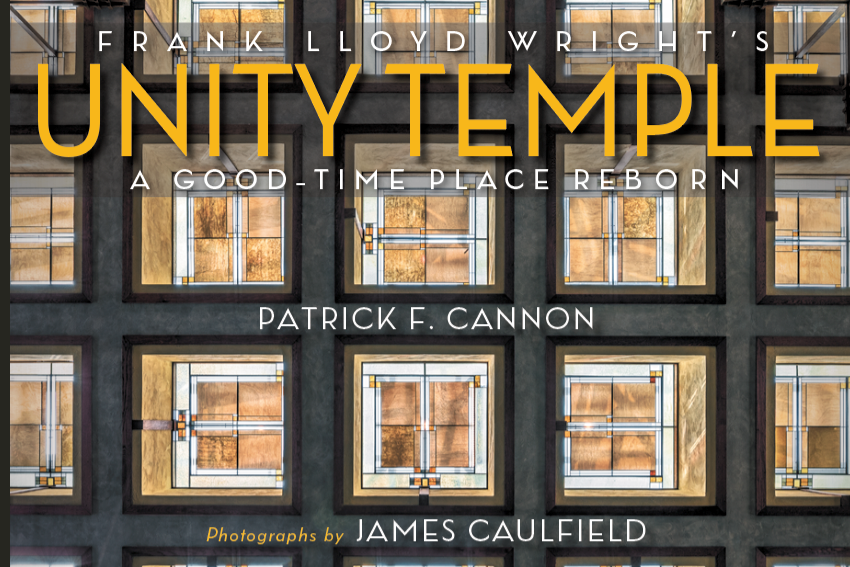Edward Lifson and Tim Samuelson once lectured in the Unity Temple cube to discuss its formation. They wondered: Instead of simply describing concrete masses grouped around an energized central space, what if the structure could be compared to a dimensional music score? Similarities in arranging notes and directives upon a lined musical staff, and drawing a detailed perspective showing repetition, rhythm, pattern, and variation were pointed out in windows, moldings, and light fixtures.
 Lifson spoke of culture in the first decade of the 1900s, when Unity Temple was designed and built. Lifson then played a recording of a timely popular piece that might have been depicted in elements of the building itself.
Lifson spoke of culture in the first decade of the 1900s, when Unity Temple was designed and built. Lifson then played a recording of a timely popular piece that might have been depicted in elements of the building itself.
On his way to a concert at Pilgrim Baptist Church years before, Samuelson watched and listened to a syncopated tune streaming out from Pilgrim Baptist Church. He claimed the old church was bobbing and weaving along with the band. He then cued an antique Victrola to play a tune that he thought Unity Temple would produce. It was a 78rpm record of Ragtime.
Next time you visit Unity Temple, sit down in a pew and look for musical notation. Then listen to your mind-music as you wonder what Mr. Wright heard.
by Peggy Lami
***
Since 1989, as a docent and volunteer for the Chicago Architecture Foundation (Center) and the Unity Temple Restoration Foundation, Peggy Lami has provided tours, lectures, docent training, Froebel Blocks Workshops, and Gingerbread Prairie House Workshops.

